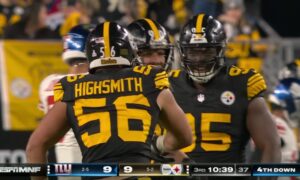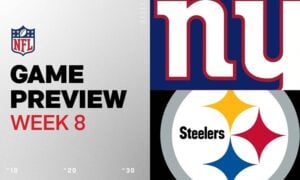Earlier this month, I took a look at the practice squad and how the Pittsburgh Steelers have in recent history been able to pluck a contributor here and there from the unit, some more significantly so than others, including current and previous starters.
But I also talked about the fact that the practice squad is just that—a squad of players for the purpose of practicing. They are alternately referred to as the scout team, as they help those on the 53-man roster prepare for their upcoming opponents by simulating their roles, even though they are unable to dress for games.
The practice squad is not a developmental group, and is rarely used for the purposes of hanging on to a player that a team hopes can become a contributor a year or two down the road with proper development, although that does happen.
Teams have an immediate need and use for their practice squad spots. They need these players to fill out the numbers that their 53-man roster lacks at certain positions to properly fill out a practice session, which is why you may see a player cut from the squad only for another player from another position to be signed if, for example, a player on the 53-man roster at a thin position went down with an injury.
To better demonstrate this, and to get a better feel of how the practice squad generally works, let’s take a look back at the 2013 practice squad, at least at the start of the season. the eight-man practice squad consisted of guard Chris Hubbard, tackle Joe Long, running back Alvester Alexander, defensive end Brian Arnfelt, outside linebacker Alan Baxter, inside linebacker Terence Garvin, cornerback Devin Smith, and wide receiver Justin Brown.
The Steelers initially carried eight linemen on the 53-man roster. They carried two linemen on the practice squad to fill out two sets of lines for practice purposes. Hubbard stuck with the team and made it to the 53-man roster in 2014, a rare success. Long bounced around a bit, briefly with the Bears, but has been unable to find a spot overall.
Garvin was immediately called up after Matt Spaeth was put on the short-term IR, which he had to be on the 53-man roster to be eligible for. Garvin’s spot was filled by wide receiver Kashif Moore, who had potential as a returner.
Sometimes players are forced to bounce around; cornerback Isaiah Green and linebacker Kion Wilson both found that out after making the initial 53-man roster as special teams players. Both were released, signed to the practice squad, and then promoted again, only to be released again, depending on need.
Players such as Baxter and Arnfelt were prospects that were not necessarily needs in terms of numbers, but were hopes for development. These hopes can be dashed when need arises. Baxter was released in order to re-sign Wilson to the practice squad after his 53-man roster spot was needed.
Of the above players, only Hubbard and Garvin remain with the team, and were it not for Spaeth, Garvin would never have been on the practice squad. Brown spent most of 2014 on the 53-man roster, and had some early playing time, but was later released. Arnfelt spent the last couple of games of the 2013 season on the active roster, though he failed to even make the practice squad the following year despite the team going through four defensive ends on the squad.
When it comes to talking about the practice squad, this is a fairly typical view of what to expect from the experience.








